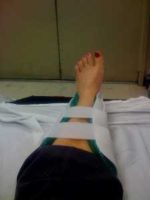Author Interviews, Hip Fractures, Lipids / 20.01.2023
Higher HDL-C levels Associated With Increased Fracture Risk
MedicalResearch.com Interview with:
Dr Monira Hussain
Senior Research Fellow &
ECF Clinical Research Australian Fellow
Public Health and Preventive Medicine
Monash University
Melbourne VIC
MedicalResearch.com: What is the background for this study?
Response: 25% of males and 44% of females aged 60 years or over experience minimal trauma fractures. Minimal trauma fractures are a clinical outcome of osteoporosis and may occur following little or no trauma i.e. fractures following a fall from standing height or less. Minimal trauma fractures are silent, people may not notice that they are at high risk of the disease until a bone is broken.
I was aware of previous studies reporting that high-density lipoprotein cholesterol (HDL-C) was elevated in patients with osteoporosis. Two animal studies showing that HDL-C reduces bone mineral density by reducing osteoblast number and function provide a plausible explanation for why high HDL-C may increase the risk of fractures.
Our study, the ASPirin in Reducing Events in the Elderly (ASPREE), and the ASPREE fracture substudy provide unique data that could determine whether these findings might apply to fracture risk in healthy older adults. The study collected data including HDL-C levels and fractures from more than 16,000 community-dwelling older adults. These participants were followed-up for a median of 4 years.
(more…)















